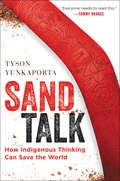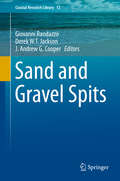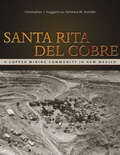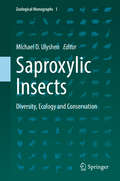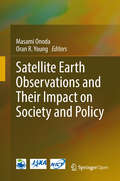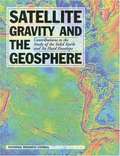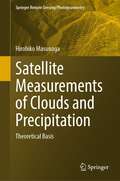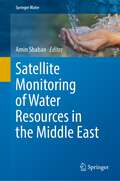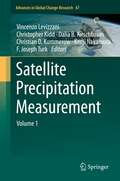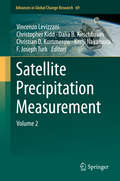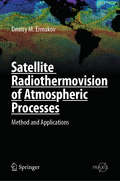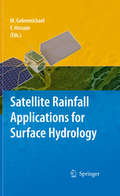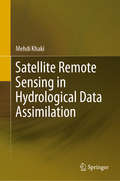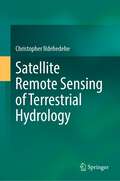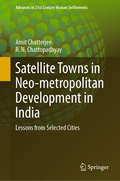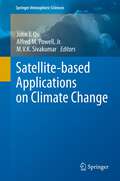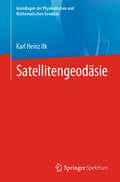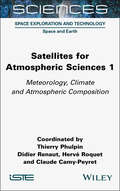- Table View
- List View
Sand Talk: How Indigenous Thinking Can Save the World
by Tyson YunkaportaA paradigm-shifting book in the vein of Sapiens that brings a crucial Indigenous perspective to historical and cultural issues of history, education, money, power, and sustainability—and offers a new template for living.As an indigenous person, Tyson Yunkaporta looks at global systems from a unique perspective, one tied to the natural and spiritual world. In considering how contemporary life diverges from the pattern of creation, he raises important questions. How does this affect us? How can we do things differently?In this thoughtful, culturally rich, mind-expanding book, he provides answers. Yunkaporta’s writing process begins with images. Honoring indigenous traditions, he makes carvings of what he wants to say, channeling his thoughts through symbols and diagrams rather than words. He yarns with people, looking for ways to connect images and stories with place and relationship to create a coherent world view, and he uses sand talk, the Aboriginal custom of drawing images on the ground to convey knowledge. In Sand Talk, he provides a new model for our everyday lives. Rich in ideas and inspiration, it explains how lines and symbols and shapes can help us make sense of the world. It’s about how we learn and how we remember. It’s about talking to everyone and listening carefully. It’s about finding different ways to look at things.Most of all it’s about a very special way of thinking, of learning to see from a native perspective, one that is spiritually and physically tied to the earth around us, and how it can save our world.Sand Talk include 22 black-and-white illustrations that add depth to the text.
Sand and Gravel Spits
by Giovanni Randazzo Derek W.T. Jackson J. Andrew G. CooperThis book draws together a series of studies of spit geomorphology and temporal evolution from around the world. The volume offers some unique insights into how these landforms are examined scientifically and how we as humans impact them, offering a global perspective on spit genesis and evolution. Spits are unique natural environments whose evolution is linked to the adjacent coast and near shore morphology, sediment supply, coastal dynamics and sea-level change. Over the past century, Global Mean Sea Level (GMSL) has risen by 10 to 20 centimetres and many coastal spits represent the first sentinel against coastal submersion. Scientific research indicates that sea levels worldwide have been rising at a rate of 3. 5 millimetres per year since the early 1990s, roughly twice the average speed of the preceding 80 years. This trend, linked to global warming will undoubtedly cause major changes in spit morphology. Spits are highly mobile coastal landforms that respond rapidly to environmental change. They therefore represent a signature of past environmental change and provide a landform indicator of climate change.
Santa Rita del Cobre: A Copper Mining Community in New Mexico (Mining the American West)
by Christopher J. Huggard Terrence M. HumbleAn account of the rise and fall of a mining town over two centuries, including photos: &“An excellent story of the people and their community.&” ―New Mexico Historical ReviewThe Spanish, Mexicans, and Americans, successively, mined copper for more than two hundred years in Santa Rita, New Mexico. Starting in 1799 after an Apache man led the Spanish to the native copper deposits, miners at the site followed industry developments in the nineteenth century to create a network of underground mines. In the early twentieth century these works became part of the Chino Copper Company&’s open-pit mining operations—operations that would overtake Santa Rita by 1970. In Santa Rita del Cobre, Christopher Huggard and Terrence Humble detail these developments with in-depth explanations of mining technology, and describe the effects on and consequences for the workers, the community, and the natural environment. Originally known as El Cobre, the mining-military camp of Santa Rita del Cobre ultimately became the company town of Santa Rita, which after World War II evolved into an independent community. From the town&’s beginnings to its demise, its mixed-heritage inhabitants from Mexico and the United States cultivated rich family, educational, religious, social, and labor traditions. Extensive archival photographs, many taken by officials of the Kennecott Copper Corporation, accompany the text, providing an important visual and historical record of a town swallowed up by the industry that created it.
Saproxylic Insects: Diversity, Ecology And Conservation (Zoological Monographs #1)
by Michael D. UlyshenThis volume offers extensive information on insect life in dying and dead wood. Written and reviewed by leading experts from around the world, the twenty-five chapters included here provide the most global coverage possible and specifically address less-studied taxa and topics. An overarching goal of this work is to unite literature that has become fragmented along taxonomic and geographic lines. A particular effort was made to recognize the dominant roles that social insects (e.g., termites, ants and passalid beetles) play in saproxylic assemblages in many parts of the world without overlooking the non-social members of these communities.The book is divided into four parts:· Part I “Diversity” includes chapters addressing the major orders of saproxylic insects (Coleoptera, Diptera, Hymenoptera, Hemiptera, Lepidoptera and Blattodea), broadly organized in decreasing order of estimated global saproxylic diversity. In addition to order-level treatments, some chapters in this part discuss groups of particular interest, including pollinators, hymenopteran parasitoids, ants, stag and passalid beetles, and wood-feeding termites.· Part II “Ecology” discusses insect-fungal and insect-insect interactions, nutritional ecology, dispersal, seasonality, and vertical stratification.· Part III “Conservation” focuses on the importance of primary forests for saproxylic insects, offers recommendations for conserving these organisms in managed forests, discusses the relationships between saproxylic insects and fire, and addresses the value of tree hollows and highly-decomposed wood for saproxylic insects. Utilization of non-native wood by saproxylic insects and the suitability of urban environments for these organisms are also covered.· Lastly, Part IV “Methodological Advancements” highlights molecular tools for assessing saproxylic diversity. The book offers an accessible and insightful resource for natural historians of all kinds and will especially appeal to entomologists, ecologists, conservationists and foresters.
Sara Snow's Fresh Living
by Sara SnowHost of the popular cable network programs "Living Fresh" and "Get Fresh with Sara Snow" brings her special blend of expert advice, enthusiasm, and realistic solutions to help readers make simple, practical changes with and for their families.
Satellite Altimetry Over Oceans and Land Surfaces (Earth Observation of Global Changes)
by Anny Cazenave Detlef StammerSatellite remote sensing, in particular by radar altimetry, is a crucial technique for observations of the ocean surface and of many aspects of land surfaces, and of paramount importance for climate and environmental studies. This book provides a state-of-the-art overview of the satellite altimetry techniques and related missions, and reviews the most-up-to date applications to ocean dynamics and sea level. It also discusses related space-based observations of the ocean surface and of the marine geoid, as well as applications of satellite altimetry to the cryosphere and land surface waters; operational oceanography and its applications to navigation, fishing and defense.
Satellite Data Compression
by Bormin HuangSatellite Data Compression covers recent progress in compression techniques for multispectral, hyperspectral and ultra spectral data. A survey of recent advances in the fields of satellite communications, remote sensing and geographical information systems is included. Satellite Data Compression, contributed by leaders in this field, is the first book available on satellite data compression. It covers onboard compression methodology and hardware developments in several space agencies. Case studies are presented on recent advances in satellite data compression techniques via various prediction-based, lookup-table-based, transform-based, clustering-based, and projection-based approaches. This book provides valuable information on state-of-the-art satellite data compression technologies for professionals and students who are interested in this topic. Satellite Data Compression is designed for a professional audience comprised of computer scientists working in satellite communications, sensor system design, remote sensing, data receiving, airborne imaging and geographical information systems (GIS). Advanced-level students and academic researchers will also benefit from this book.
Satellite Dynamics and Space Missions (Springer INdAM Series #34)
by Alessandra Celletti Giulio Baù Cătălin Bogdan Galeş Giovanni Federico GronchiThis book discusses the design of new space missions and their use for a better understanding of the dynamical behaviour of solar system bodies, which is an active field of astrodynamics. Space missions gather data and observations that enable new breakthroughs in our understanding of the origin, evolution and future of our solar system and Earth’s place within it. Covering topics such as satellite and space mission dynamics, celestial mechanics, spacecraft navigation, space exploration applications, artificial satellites, space debris, minor bodies, and tidal evolution, the book presents a collection of contributions given by internationally respected scientists at the summer school “Satellite Dynamics and Space Missions: Theory and Applications of Celestial Mechanics”, held in 2017 at San Martino al Cimino, Viterbo (Italy). This school aimed to teach the latest theories, tools and methods developed for satellite dynamics and space, and as such the book is a valuable resource for graduate students and researchers in the field of celestial mechanics and aerospace engineering.
Satellite Earth Observations and Their Impact on Society and Policy
by Oran R Young Masami OnodaThe result of a workshop bringing together an international advisory board of experts in science, satellite technologies, industry innovations, and public policy, this book addresses the current and future roles of satellite Earth observations in solving large-scale environmental problems. The book showcases the results of engaging distinct communities to enhance our ability to identify emerging problems and to administer international regimes created to solve them. It also reviews the work of the Policy and Earth Observation Innovation Cycle (PEOIC) project, an effort aimed at assessing the impact of satellite observations on environmental policy and to propose a mission going forward that would launch an "innovation cycle". The achievements of such a mission would feed back to innovations in next-generation observation technology, thus contributing to global policy demand for policy-relevant information. This book is open access under a CC BY license.
Satellite Gravity and the Geosphere: Contributions to the Study of the Solid Earth and Its Fluid Envelope
by Committee on Earth Gravity from SpaceFor the past three decades, it has been possible to measure the earth's static gravity from satellites. Such measurements have been used to address many important scientific problems, including the earth's internal structure, and geologically slow processes like mantle convection. In principle, it is possible to resolve the time-varying component of the gravity field by improving the accuracy of satellite gravity measurements. These temporal variations are caused by dynamic processes that change the mass distribution in the earth, oceans, and atmosphere. Acquisition of improved time-varying gravity data would open a new class of important scientific problems to analysis, including crustal motions associated with earthquakes and changes in groundwater levels, ice dynamics, sea-level changes, and atmospheric and oceanic circulation patterns. This book evaluates the potential for using satellite technologies to measure the time-varying component of the gravity field and assess the utility of these data for addressing problems of interest to the earth sciences, natural hazards, and resource communities.
Satellite Measurements of Clouds and Precipitation: Theoretical Basis (Springer Remote Sensing/Photogrammetry)
by Hirohiko MasunagaThis book provides a thorough introductory description of the physical principles underlying the satellite remote sensing of clouds and precipitation. A diverse collection of satellite sensors is covered, including imagers, radars, and sounders over a broad spectral range from visible to microwave radiation. The progress in satellite instrument technology during the past two decades as represented by the Tropical Rainfall Measuring Mission (TRMM), CloudSat, and Global Measurement Mission (GPM) satellites has drastically improved our capability of measuring clouds and precipitation across the globe. At the same time, such rapid progress makes it increasingly challenging for scientists without specialized skills in remote sensing to fully grasp how satellite measurements are being made. This book is designed to mitigate that challenge. The targeted readers are graduate students and professional scientists seeking an extended summary of the theoretical background behind observations from space, ranging from fundamental physics (the statistical mechanics and radiative processes, for instance) to more practical levels of theory such as retrieval algorithm design.
Satellite Monitoring of Water Resources in the Middle East (Springer Water)
by Amin ShabanThis book presents both updated and new measurements on water resources from selective pilot areas form the Middle East. Demand for water has become very crucial notably in arid and semiarid regions like in the Middle East. The changing climate and the increased population are the most striking challenges on water resources in this region where the largest part of its territory is dry lands and deserts with minimal precipitation and high evaporation rates, and thus, the average per capita of water does not exceed 25 m3/year. This resulted in developing many studies and researches in different Middle East countries to clearly identify and assess the hydrological characteristics of the available water resources and to explore new resources in order to secure balanced water supply/demand. As a first of its type, this book introduces comprehensive knowledge on the successful reports of the use of satellite images in water studies in the Middle East, and the economic value resulted from adopting these techniques. Based on illustrated case-studies the book will represent a significant resource for a large number of experts, academics, researchers, engineers and different-level stakeholders including the decision makers.
Satellite Precipitation Measurement: Volume 1 (Advances in Global Change Research #67)
by Vincenzo Levizzani Christopher Kidd Dalia B. Kirschbaum Christian D. Kummerow Kenji Nakamura F. Joseph TurkThis book offers a complete overview of the measurement of precipitation from space, which has made considerable advancements during the last two decades. This is mainly due to the Tropical Rainfall Measuring Mission (TRMM), the Global Precipitation Measurement (GPM) mission, CloudSat and a carefully maintained constellation of satellites hosting passive microwave sensors. The book revisits a previous book, Measuring Precipitation from Space, edited by V. Levizzani, P. Bauer and F. J. Turk, published with Springer in 2007. The current content has been completely renewed to incorporate the advancements of science and technology in the field since then. This book provides unique contributions from field experts and from the International Precipitation Working Group (IPWG). The book will be of interest to meteorologists, hydrologists, climatologists, water management authorities, students at various levels and many other parties interested in making use of satellite precipitation data sets.
Satellite Precipitation Measurement: Volume 2 (Advances in Global Change Research #69)
by Vincenzo Levizzani Christopher Kidd Dalia B. Kirschbaum Christian D. Kummerow Kenji Nakamura F. Joseph TurkThis book offers a complete overview of the measurement of precipitation from space, which has made considerable advancements during the last two decades. This is mainly due to the Tropical Rainfall Measuring Mission (TRMM), the Global Precipitation Measurement (GPM) mission, CloudSat and a carefully maintained constellation of satellites hosting passive microwave sensors. The book revisits a previous book, Measuring Precipitation from Space, edited by V. Levizzani, P. Bauer and F. J. Turk, published with Springer in 2007. The current content has been completely renewed to incorporate the advancements of science and technology in the field since then. This book provides unique contributions from field experts and from the International Precipitation Working Group (IPWG).The book will be of interest to meteorologists, hydrologists, climatologists, water management authorities, students at various levels and many other parties interested in making use of satellite precipitation data sets.
Satellite Radiothermovision of Atmospheric Processes: Method and Applications (Springer Praxis Books)
by Dmitry M. ErmakovThis book summarizes the author’s research resulted in developing the satellite radiothermovision approach which allows retrieving dynamical and energy characteristics of atmospheric mesoscale and synoptic-scale processes based on a close scheme of satellite passive radiometry data processing. The book introduces new applications of the satellite passive microwave observations to detailed systematic study of tropical cyclones’ evolution, climatology and characteristics of atmospheric river, parameters of global atmospheric circulation and their variations on climatically significant scales. The results presented in the book demonstrate a clear relation between the convergence/divergence of latent heat from the lower atmosphere to the center of tropical cyclone with variations of its intensity and provide a better insight into the tropical cyclone dynamical energy balance based on remote data.
Satellite Rainfall Applications for Surface Hydrology
by Mekonnen Gebremichael Faisal HossainWhile there are a growing number of high-resolution space-based systems for measuring precipitation, instances of the use of these products for surface hydrology are rare. This book, which covers both scientific and practical matters, aims to change that. With contributions from a panel of researchers from a wide range of fields, the chapters focus on evaluating the potential, utility and application of high resolution satellite precipitation products in relation to surface hydrology. Focusing on the way the algorithms for the precipitation products evolved, the accuracy assessment of those products in different regions of the world, and the application of the precipitation products to various decision support systems, the book is at the interface between satellite rainfall and surface hydrologic applications. It dwells on issues that are of concern at hydrologic scales of application. In doing so, it provides very useful information to practitioners, researchers and graduate students who need to explore the latest on satellite precipitation products for various hydrological purposes. Crucially, the book provides examples of real-world applications of satellite rainfall products in operational hydrology and real-time decision-making. This enables readers to understand the potential of satellite rainfall products for practical applications ranging from agricultural/crop monitoring to flood and landslide detection in developing countries.
Satellite Remote Sensing for Conservation Action: Case Studies from Aquatic and Terrestrial Ecosystems
by Allison K. Leidner Graeme M. BuchananSatellite remote sensing presents an amazing opportunity to inform biodiversity conservation by inexpensively gathering repeated monitoring information for vast areas of the Earth. However, these observations first need processing and interpretation if they are to inform conservation action. Through a series of case studies, this book presents detailed examples of the application of satellite remote sensing, covering both aquatic and terrestrial ecosystems, to conservation. The authors describe how collaboration between the remote sensing and conservation communities makes satellite data functional for operational conservation, and provide concrete examples of the lessons learned in addition to the scientific details. The editors, one at NASA and the other at a conservation NGO, have brought together leading researchers in conservation remote sensing to share their experiences from project development through to application, and emphasise the human side of these projects.
Satellite Remote Sensing in Hydrological Data Assimilation
by Mehdi KhakiThis book presents the fundamentals of data assimilation and reviews the application of satellite remote sensing in hydrological data assimilation. Although hydrological models are valuable tools to monitor and understand global and regional water cycles, they are subject to various sources of errors. Satellite remote sensing data provides a great opportunity to improve the performance of models through data assimilation.
Satellite Remote Sensing of Terrestrial Hydrology
by Christopher NdehedeheThis book highlights several opportunities that exist in satellite remote sensing of large-scale terrestrial hydrology. It lays bare the novel concept of remote sensing hydrology and demonstrates key applications of advance satellite technology and new methods in advancing our fundamental understanding of environmental systems. This includes, using state-of-the-art satellite hydrology missions like the Gravity Recovery and Climate Experiment and other multi-mission satellite systems as important tools that underpin water resources planning and accounting. This book discusses and demonstrates how the efficacy, simplicity, and sophistication in novel computing platforms for big earth observation data can help facilitate environmental monitoring and improve contemporary understanding of climate change impacts on freshwater resources. It also provides opportunities for practitioners and relevant government agencies to leverage satellite-based information in a transdisciplinary context to address several environmental issues affecting society. This book provides a general framework and highlights methods to help improve our understanding of hydrological processes and impact analysis from extreme events (e.g., droughts, floods) and climate change.
Satellite Towns in Neo-metropolitan Development in India: Lessons from Selected Cities (Advances in 21st Century Human Settlements)
by Amit Chatterjee R. N. ChattopadhyayThis book discusses population growth and the resultant problems, and highlights the need for immediate action to develop a set of planned satellite towns around Indian megacities to reduce their population densities and activity concentrations. It addresses problems like unplanned spatial expansion, over-concentration of populations, unmanageable situations in industrial growth, and poor traffic management, concluding that only megacities and their satellites, when planned properly, can together mitigate the urgent problem of urban concentration in and around the megacities.Identifying the general problems, the book develops a quantitative and spatially fitting regional allocation model of population and economic activities. It also offers a policy-based planned program of development for the selected megacities in India along with their satellites and fringe areas to ensure a healthy, balanced and prospective urban scenario for India in the coming decades.
Satellite-based Applications on Climate Change
by Alfred Powell John Qu M.V.K. SivakumarClimate and other environmental changes are drawing unprecedented concern and attention from national governments, international organizations and local communities. Global warming has left noticeable impacts on the environment and the ecosystems it supports (including humans), and has important implications for sustainable economic and social development in the future. Satellite observations of climate and environmental change have become an increasingly important tool in recent years in helping to shape the response of international communities to this critical global challenge. The book presents the latest advances in satellite-based remote sensing of the Earth's environment - ranging from applications in climate and atmospheric science to hydrology, oceanography, hydrology, geomorphology, ecology and fire studies. Introductory chapters also cover key technical aspects such as instrumentation, calibration, data analysis, and GIS tools for decision-making.
Satellitengeodäsie (Grundlagen der Physikalischen und Mathematischen Geodäsie)
by Karl Heinz IlkDieses Lehrbuch aus der Reihe „Grundlagen der Physikalischen und Mathematischen Geodäsie“ gibt einen Einblick in die geodätische Nutzung künstlicher Erdsatelliten. Die heutzutage erfolgreichsten Beobachtungs- und Analysemethoden zur Erforschung des Systems Erde werden unter dem Sammelbegriff "Satellitengeodäsie" zusammengefasst. In einem einleitenden Abschnitt werden die Theorie der Satellitenbewegung und die Störungsgleichungen der klassischen Bahnelemente betrachtet. Darauf bauen die verschiedenen Anwendungsmöglichkeiten der geodätischen Nutzung künstlicher Erdsatelliten auf und insbesondere die speziellen Methoden der Analyse langer Bahnen zur Bestimmung des Gravitationsfeldes. Vor allem werden die sog. In-Situ-Methoden der Gravitationsfeldbestimmung mit Hilfe künstlicher Erdsatelliten erläutert, die mit den Anwendungen der Satelliten-Gravitations-Gradiometrie und der Ausmessung des statischen und zeitveränderlichen Gravitationsfeldes mit Hilfe des Satellite-to-Satellite-Trackings zu spektakulären Ergebnissen geführt haben. Somit haben die Leser die Möglichkeit, die Verfahren anschaulich zu begreifen, die sich in den letzten Jahrzehnten bewährt haben.
Satellitennavigation
by Hans Dodel Dieter HäuplerDie Ortung und Navigation mit Hilfe von Satelliten steht an einem Wendepunkt. Mit dem europäischen Satellitennavigationssystem GALILEO ist die Entscheidung für ein eigenes europäisches Navigationssystem gefallen, das neue Maßstäbe setzt und der europäischen Wirtschaft nachhaltige Impulse geben kann. Wie funktioniert GALILEO? Warum brauchen wir dieses System? Welche Anwendungen werden damit möglich? Diese Fragen beantwortet das Buch und stellt den aktuellen Wissensstand zu diesem Thema dar, einschließlich der mathematischen Grundlagen.
Satellitennavigation: Wie sie funktioniert und wie sie unseren Alltag beeinflusst (Technik im Fokus)
by Tobias SchüttlerFaszination Satellitennavigation – welche Rolle spielt sie im täglichen Leben? Wie funktioniert diese Technik? Was wäre, wenn GPS abgeschaltet würde? Und wie steht es um das europäische Galileo-System?In den vergangenen 20 Jahren hat sich die Satellitennavigation von einer anfangs rein militärischen Technologie hin zur vollkommen selbstverständlich genutzten Alltagstechnik entwickelt. Die Bandbreite reicht vom Navigationsgerät im Auto über Smartphones und kleine Empfänger für Outdoorsportler bis hin zu hochgenauen Spezialgeräten zum Zwecke der Landvermessung. Der Autor erläutert die im Prinzip sehr einfache Funktionsweise, welche jedoch in der konkreten Umsetzung modernste Methoden der Nachrichten- und Elektrotechnik, der Geographie und der Physik erfordert. In der zweiten Auflage wird verstärkt auf das europäische Galileo-System eingegangen und dessen aktueller Ausbaustand beschrieben.
Satellites for Atmospheric Sciences 1: Meteorology, Climate and Atmospheric Composition
by Claude Camy-Peyret Thierry Phulpin Didier Renaut Hervé RoquetHow can atmospheric variables such as temperature, wind, rain and ozone be measured by satellites? How are these measurements taken and what has been learned since the first measurements in the 1970s? What data are currently available and what data are expected in the future? The first volume of this encyclopedic book answers these questions by reporting the history of satellite meteorology and addresses how national and international agencies define coordinated programs to cover user needs. It also presents the principles of satellite remote sensing to deliver products suited to user requirements. This book is completed by a glossary and appendices with a list of supporting instruments already in use.
